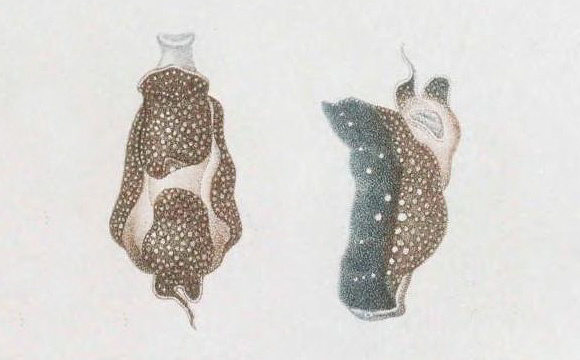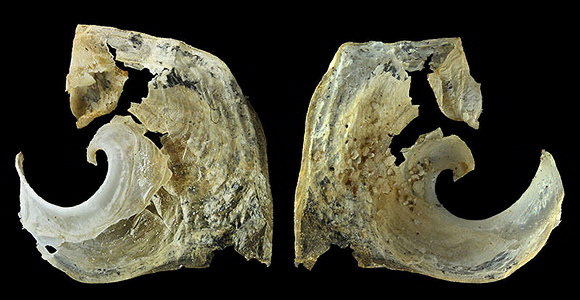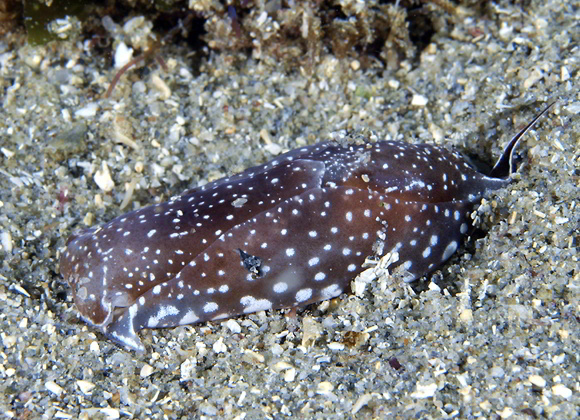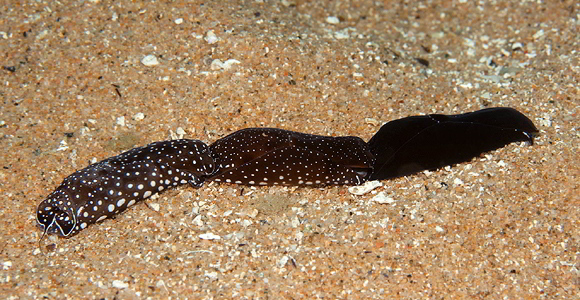
Predator in the upper infralittoral, mostly in lagunar systems.
Synonyms: marmorata, membranaceum…
Above: the animal, pictured in Renier & Meneghini: Osservazioni postume de zoologia adriatica, Venezia 1847, plate XVI.
« Doridium tricoloratum is more common in the gulf. Ordinarily it is brown in colour: the back dotted with white, the lateral lobes of the foot adorned with fine white marks, which look like so many pearls, the blue, blackish foot, the head and the rear lobe of the mantle edged in white. […] Some individuals have a light brown colour, others are chestnut-coloured. The foot is dark indigo or black or dark purple, sometimes with white spots and sometimes without. The larger white spots are always on the lower edge of the lateral lobes of the foot, which in the usual position are turned upwards. Sometimes the white spots are found like small tubercles. The essential characteristic of this species is the small, flat, bilobate disc formed by the posterior lobe of the mantle, with the right lobe rounded and the left one prolonged in a vermiform appendix. » – op. cit. p.7-8.

The internal shell « is hidden under the mantle and therefore invisible to the naked eye. This shell, fragile, is rather rounded, very flattened. Starting from the initial turn, it makes only one or two whorls. The last one, spread-out, comma-shaped, is well separated by a groove on its anterior edge, and it ends in a more or less acute point. The shape of this shell is a discriminating element in the identification of Aglaja tricolorata. » (DORIS).
Above: two images of the shell, unfortunately broken at the apex. But the characteristic shape of the spire is preserved. Port-Leucate, Occitania, S. France. Size circa 15mm.
Original pictures provided by S. Clanzig (FR).
– (CC BY-NC-SA) –

At the limit of sands, northeastern shore of Tarifa Island, S. Cádiz Province, Andalucia, S. Spain. Original picture provided by whodden for iNaturalist – (CC BY-NC).
